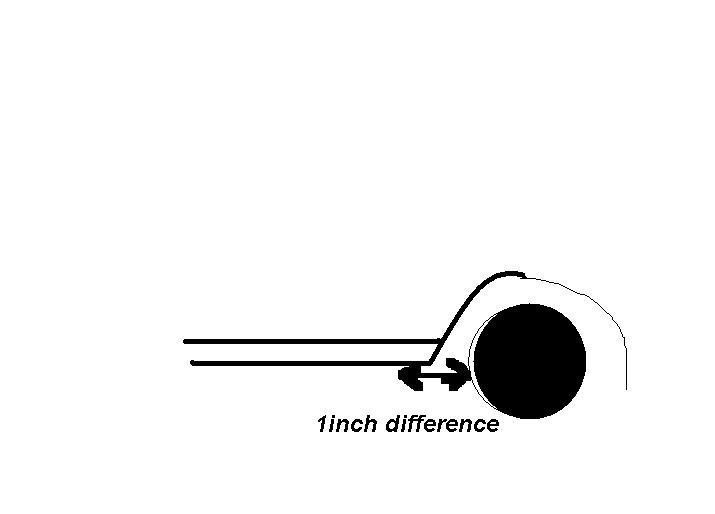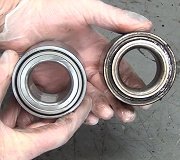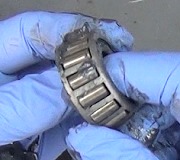It makes a grinding noise on the right side when making sharp slow turns, I recently upgraded from 235 65 16 tires to 235 70 16 tires as I have a parts vur which fits them no problem, however on mine I noticed the space between the fender splash shield and the tire is greater on the driver side compared to the passenger side.
I measured the distance between the tire to the fender with the tires straight, and on the drivers side I got 3 inches and on the passenger side I got 2 inches, its only the passenger side which makes the noise.
I bought this vehicle used and the passenger side wheel bearing was growed on to the steering knuckle and axle so I had to pull the axle out and take the axle, steering knuckle and wheel bearing to a machine shop there they had to use a torch and a 20ton press to get the axle seperated from the wheel bearing, to allow the wheel bearing to come out. Should also add when I changed the front stabilizer bar links, one of them was bent fairly bad this might be something irrelevant.
Don't know if this is relevant to causing the difference in gap,
Anyways what would and can cause this?
Thanks, and if possible is there any frame measurements for a 2002 Saturn Vue V6 3.0L?
Saturday, June 8th, 2013 AT 10:48 AM




